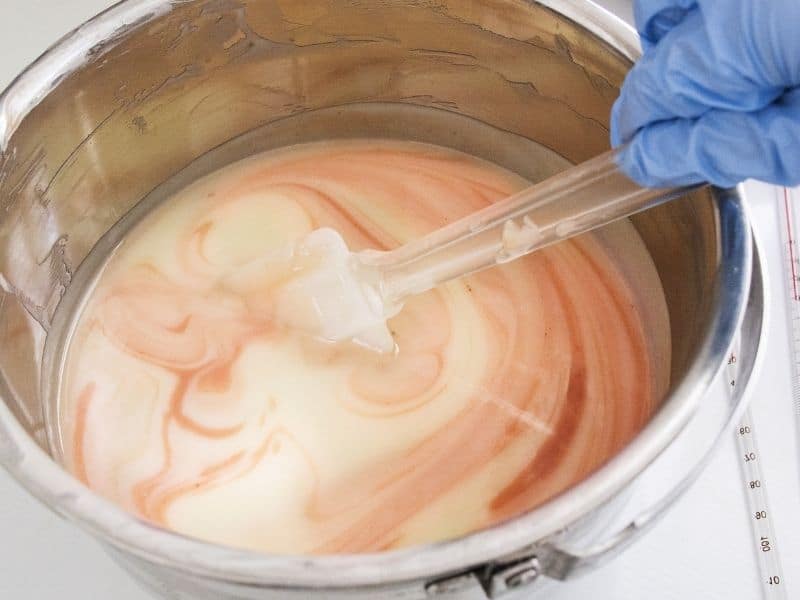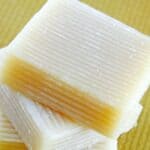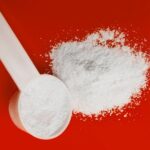Trace is a crucial stage in the soap making process that signals to you when the mixture has formed a stable emulsion. So, what exactly is false trace in soap making?
False trace in soap making is when the soap mixture appears to have thickened but the oils in the mixture have not yet saponified. Some common causes of false trace are using oils or fats that are too cold causing them to harden below their melting points.
This phenomenon can be hard to identify because the thickness of the mixture can be quite similar to that of trace. However, it is important to clear this up or your batch of soap could be at risk. Let’s take a closer look.
Trace In Soap Making Explained
Trace is a crucial stage in the soap making process that signals to you when the mixture has formed a stable emulsion. So, what exactly is trace in soap making?
Trace in soap making is the point at which the soap mixture has thickened and saponification has begun. This crucial stage allows you to know when to add fragrance, color, or other additives to your soap.
Soap making trace is an important concept to understand to ensure that your soap turns out perfect every time.
Cause Of False Trace
As mentioned above, trace is the point at which your soap batter has emolsified. What can be happening to make the soap mixture to appear as if trace has happened? What is the cause of false trace?
False trace happens when the temperature of the oils used to make the soap drop below their minimum melting point, causing the oils to harden as a solid. This prevents the batter from being mixed properly and can prevent proper saponification.
Although the mixture looks like it is stable, during false trace you will have streaks of hardening oil that are not mixed with lye.
The good news is that this is easily fixed.
False Trace Solution
The fix for false trace is very simple and it is something that most people do anyway. Particularly if you are using oils that harden at room temperature. How to fix false trace?
Fix false trace by heating the soap mixture above the minimum melting point of the oil and fat you are using in your soap making recipe. This will turn the oil back to its liquid form.
You can then continue mixing until trace is reached.
It is important to make sure that the mixture is not heated too much as this can damage the properties of the oil.
If you are unsure, it is always best to err on the side of caution and heat the mixture slowly.
When trace is reached, you will know because the mixture will thicken and trace lines will be left behind when you drizzle the batter back into the pot.
False trace is a common problem but it is easily fixed. Just make sure to heat the mixture until the oils have melted and then continue mixing until trace is reached.
Preventing False Trace
To make sure your soap turns out great, it’s important to prevent false trace during the soap making process. Here are some simple tips to avoid false trace:
Use the Right Temperature
Make sure the oils and fats you use are warmed to the right temperature before adding them to the mixture. This helps prevent them from getting too cold and turning solid too soon, which can cause false trace. Use a thermometer to check and keep an eye on the temperature while making soap.
Mix Everything Well
Mixing the ingredients properly is key to avoiding false trace. Blend the oils, fats, and lye solution together until they are well combined. This helps create a smooth mixture and reduces the chance of uneven parts and false trace. You can use a stick blender or hand whisk to mix everything thoroughly.
Pay Attention to Ingredient Temperatures
Besides oils and fats, other ingredients like fragrance oils or additives also need to be at the right temperature. Make sure they’re warmed up correctly before adding them to the mixture. This ensures that all the components blend well together and don’t cause the mixture to thicken too soon, resembling false trace.
Consider the Room Temperature
The temperature in your workspace can also affect false trace. If it’s too cold, the mixture may cool down quickly and solidify before it’s properly mixed. Keep your workspace warm or use a heat source to maintain the right temperature during soap making.
Be Patient and Watchful
Take your time when mixing the soap batter and be observant of its consistency. Make sure all the ingredients are blended smoothly, with no streaks or unincorporated oils. Keep an eye out for any signs of false trace, like an uneven texture or incomplete mixing. If you notice any issues, address them right away.
Remember to use the right temperature, mix everything well, pay attention to ingredient temperatures, and be patient and watchful during the process.
Importance of Trace in Soap Making
Although trace is a crucial stage in the soap making process, it is not the be-all and end-all. You can technically stop at trace and your soap will still saponify.
However, there are a few reasons why you might want to continue mixing after trace.
Firstly, continuing to mix after trace will help to ensure that the soap batter is mixed properly and that all of the oils are saponified.
If you stop mixing at trace, there is a risk that some of the oils will not be mixed properly and this can lead to an uneven batch of soap.
Secondly, continuing to mix after trace will help to thicken the mixture. This is important because a thicker mixture is less likely to cause problems during the saponification process.
So, if you are having trouble reaching trace or your trace is not as thick as you would like, continue mixing and see if that helps.
Tips to Identify Trace in Soap Making
One of the most common questions I get asked is how to identify trace. After all, trace can be a bit of a tricky stage to identify.
Here are a few tips that should help you to identify trace:
- The texture of the batter will change and it will become thicker.
- You will be able to see trace lines when you drizzle the batter back into the pot.
- The mixture will start to leave trails behind when stirred.
- The mixture will thicken and start to look like pudding.
If you are still having trouble identifying trace, don’t worry. Just continue mixing until the batter is thick enough that it leaves trails behind when stirred.
Frequently Asked Questions
Trace in soap making is the point at which the soap mixture has thickened and saponification has begun. This crucial stage allows you to know when to add fragrance, color, or other additives to your soap.
The fix for false trace is very simple and it is something that most people do anyway. Particularly if you are using oils that harden at room temperature. How to fix false trace? Fix false trace by heating the soap mixture above the minimum melting point of the oil and fat you are using in your soap making recipe. This will turn the oil back to its liquid form. You can then continue mixing until trace is reached.
Trace is a crucial stage in the soap making process that signals to you when the mixture has formed a stable emulsion. trace allows you to know when to add fragrance, color, or other additives to your soap.
If you stop mixing at trace, there is a risk that some of the oils will not be mixed properly and this can lead to an uneven batch of soap. Secondly, continuing to mix after trace will help to thicken the mixture. This is important because a thicker mixture is less likely to cause problems during the saponification process.
Conclusion
In conclusion, false trace is something that can be common if you are using oils with a low melting point, but it is easily avoided by heating up your soap batter. Trace is an important stage in the soap-making process, so take your time and make sure that your mixture is completely emulsified so that you have the best chance for success.






